Impact of the US-China Trade War on Global Economies: An Analysis
VerifiedAdded on 2021/02/22
|10
|1328
|207
Report
AI Summary
This report examines the current state of the US-China trade war, focusing on the imposition of tariffs and their impacts on both economies. It discusses the reasons behind the trade conflict, including disputes over unfair practices and intellectual property rights, and analyzes the effects on import, export, and foreign direct investment. The report highlights the responses of both countries, including retaliatory tariffs and negotiations, and assesses the impact on the Australian economy. It references key academic sources to support its analysis, providing a comprehensive overview of the trade war's complexities and consequences.
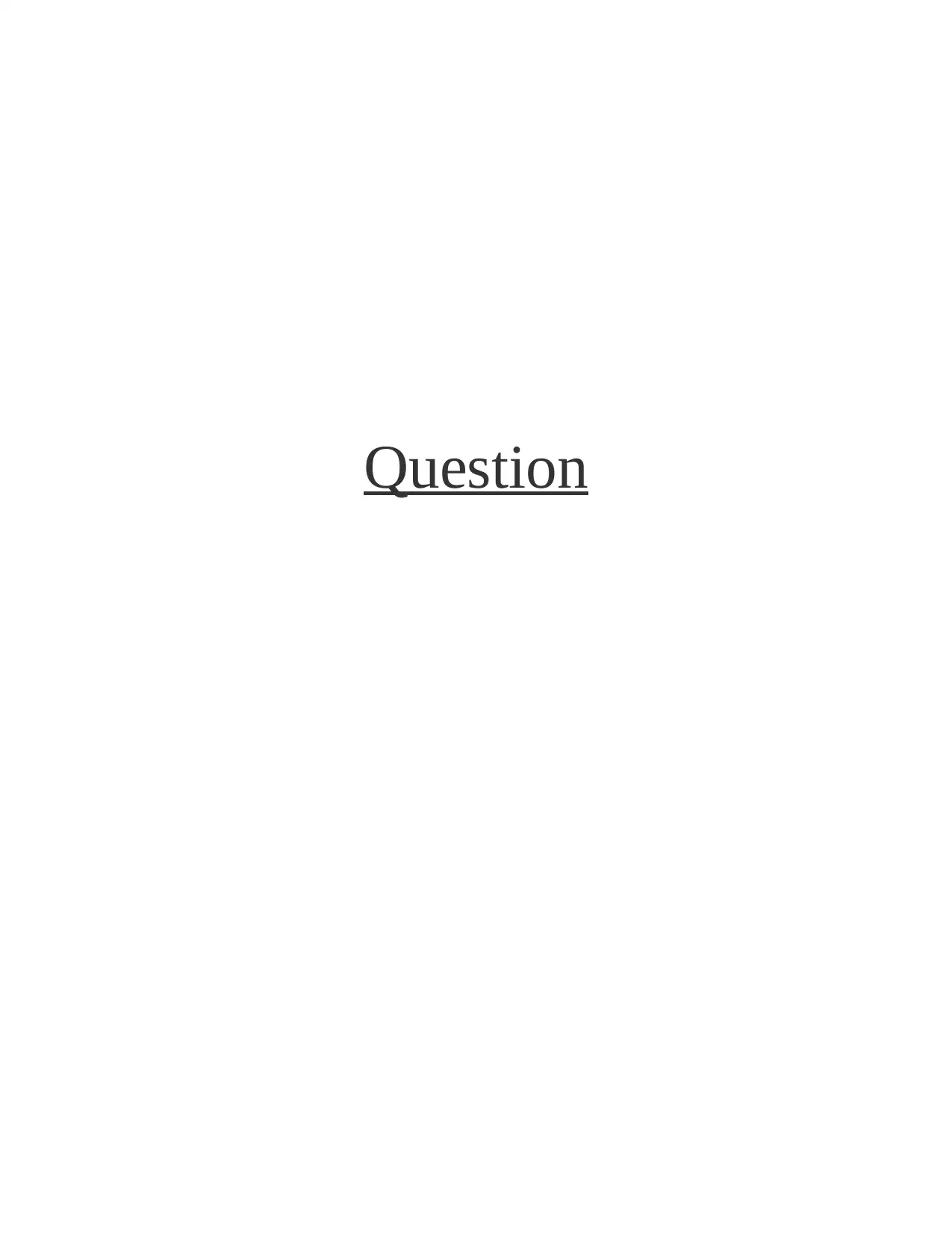
Question
Paraphrase This Document
Need a fresh take? Get an instant paraphrase of this document with our AI Paraphraser
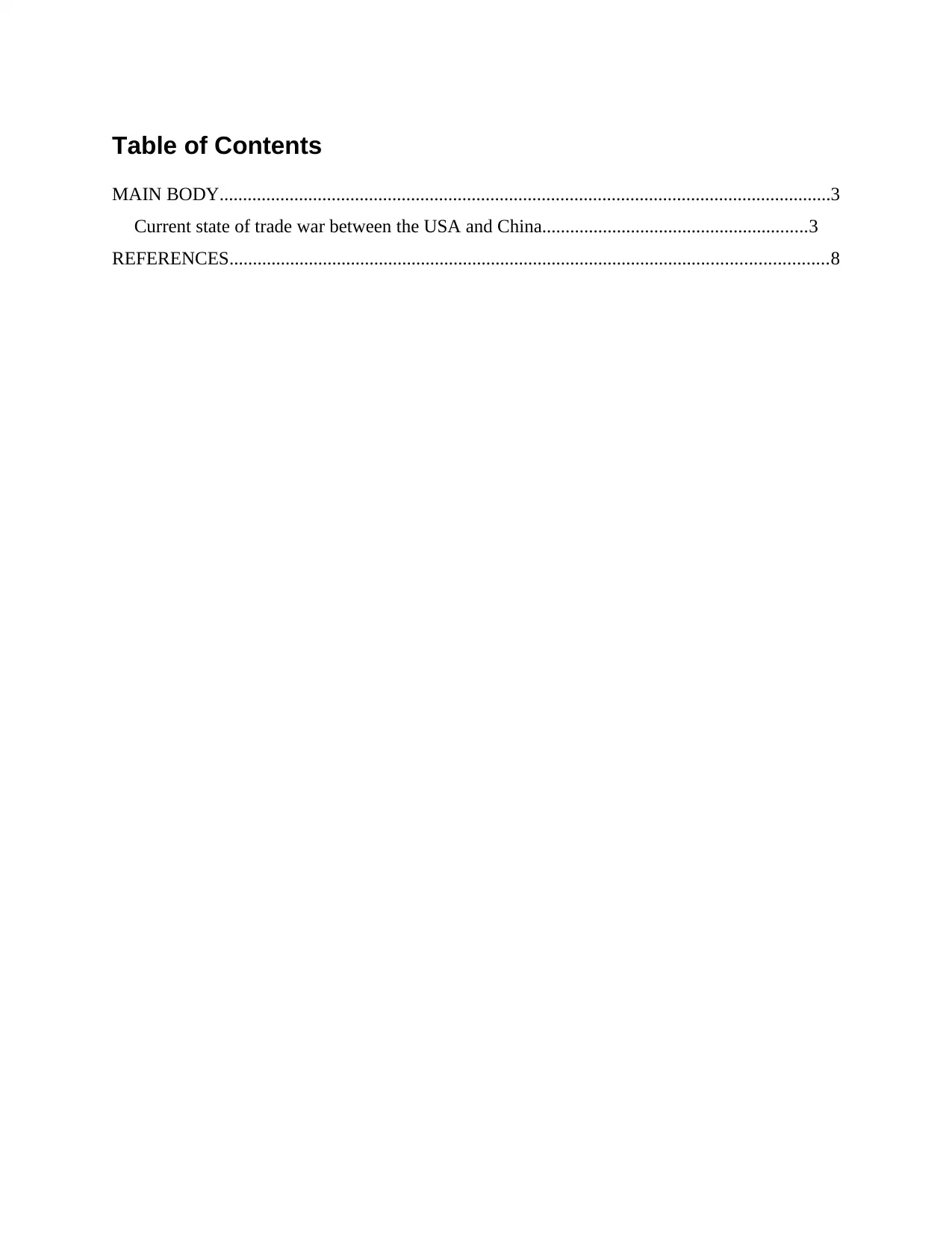
Table of Contents
MAIN BODY...................................................................................................................................3
Current state of trade war between the USA and China.........................................................3
REFERENCES................................................................................................................................8
MAIN BODY...................................................................................................................................3
Current state of trade war between the USA and China.........................................................3
REFERENCES................................................................................................................................8
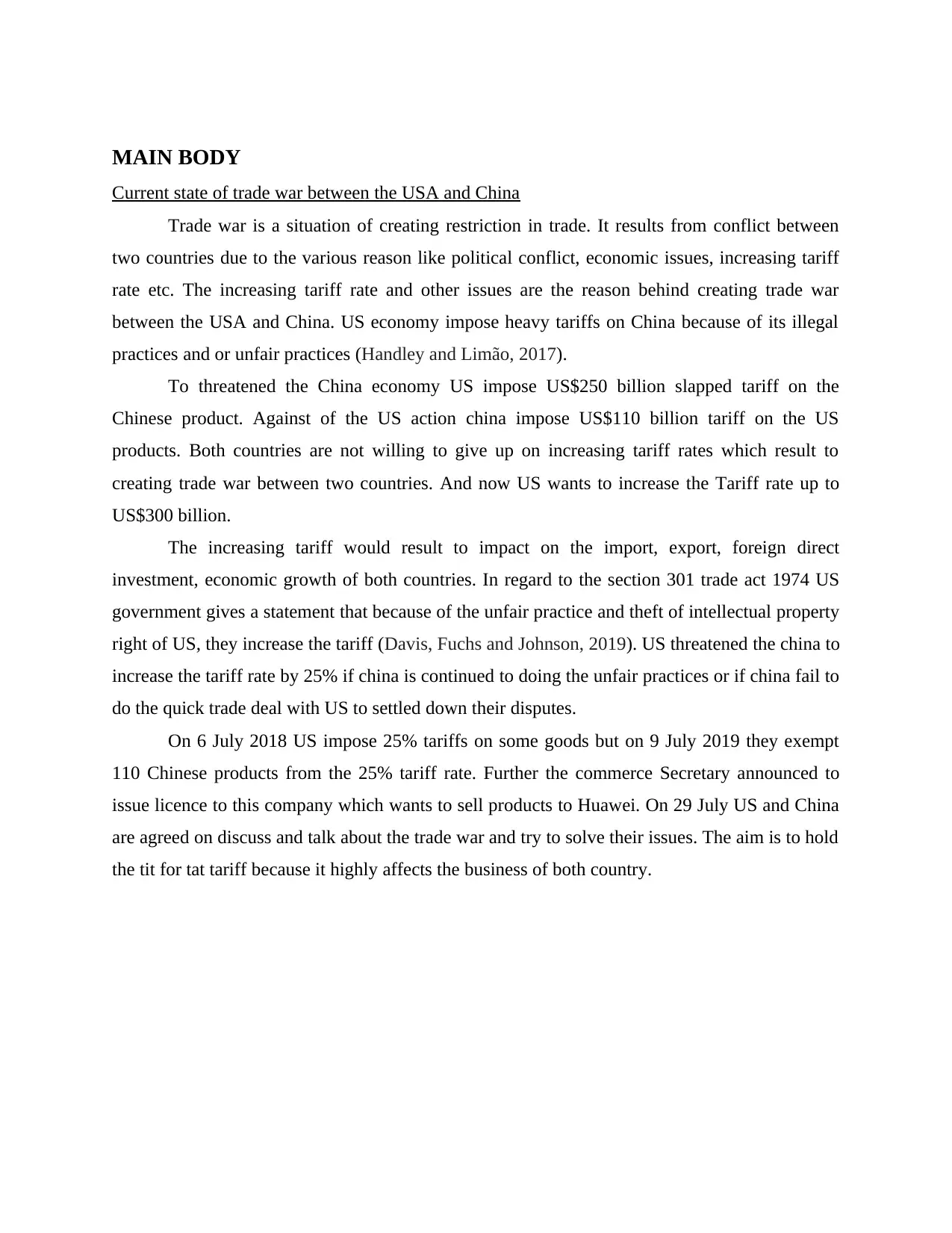
MAIN BODY
Current state of trade war between the USA and China
Trade war is a situation of creating restriction in trade. It results from conflict between
two countries due to the various reason like political conflict, economic issues, increasing tariff
rate etc. The increasing tariff rate and other issues are the reason behind creating trade war
between the USA and China. US economy impose heavy tariffs on China because of its illegal
practices and or unfair practices (Handley and Limão, 2017).
To threatened the China economy US impose US$250 billion slapped tariff on the
Chinese product. Against of the US action china impose US$110 billion tariff on the US
products. Both countries are not willing to give up on increasing tariff rates which result to
creating trade war between two countries. And now US wants to increase the Tariff rate up to
US$300 billion.
The increasing tariff would result to impact on the import, export, foreign direct
investment, economic growth of both countries. In regard to the section 301 trade act 1974 US
government gives a statement that because of the unfair practice and theft of intellectual property
right of US, they increase the tariff (Davis, Fuchs and Johnson, 2019). US threatened the china to
increase the tariff rate by 25% if china is continued to doing the unfair practices or if china fail to
do the quick trade deal with US to settled down their disputes.
On 6 July 2018 US impose 25% tariffs on some goods but on 9 July 2019 they exempt
110 Chinese products from the 25% tariff rate. Further the commerce Secretary announced to
issue licence to this company which wants to sell products to Huawei. On 29 July US and China
are agreed on discuss and talk about the trade war and try to solve their issues. The aim is to hold
the tit for tat tariff because it highly affects the business of both country.
Current state of trade war between the USA and China
Trade war is a situation of creating restriction in trade. It results from conflict between
two countries due to the various reason like political conflict, economic issues, increasing tariff
rate etc. The increasing tariff rate and other issues are the reason behind creating trade war
between the USA and China. US economy impose heavy tariffs on China because of its illegal
practices and or unfair practices (Handley and Limão, 2017).
To threatened the China economy US impose US$250 billion slapped tariff on the
Chinese product. Against of the US action china impose US$110 billion tariff on the US
products. Both countries are not willing to give up on increasing tariff rates which result to
creating trade war between two countries. And now US wants to increase the Tariff rate up to
US$300 billion.
The increasing tariff would result to impact on the import, export, foreign direct
investment, economic growth of both countries. In regard to the section 301 trade act 1974 US
government gives a statement that because of the unfair practice and theft of intellectual property
right of US, they increase the tariff (Davis, Fuchs and Johnson, 2019). US threatened the china to
increase the tariff rate by 25% if china is continued to doing the unfair practices or if china fail to
do the quick trade deal with US to settled down their disputes.
On 6 July 2018 US impose 25% tariffs on some goods but on 9 July 2019 they exempt
110 Chinese products from the 25% tariff rate. Further the commerce Secretary announced to
issue licence to this company which wants to sell products to Huawei. On 29 July US and China
are agreed on discuss and talk about the trade war and try to solve their issues. The aim is to hold
the tit for tat tariff because it highly affects the business of both country.
⊘ This is a preview!⊘
Do you want full access?
Subscribe today to unlock all pages.

Trusted by 1+ million students worldwide
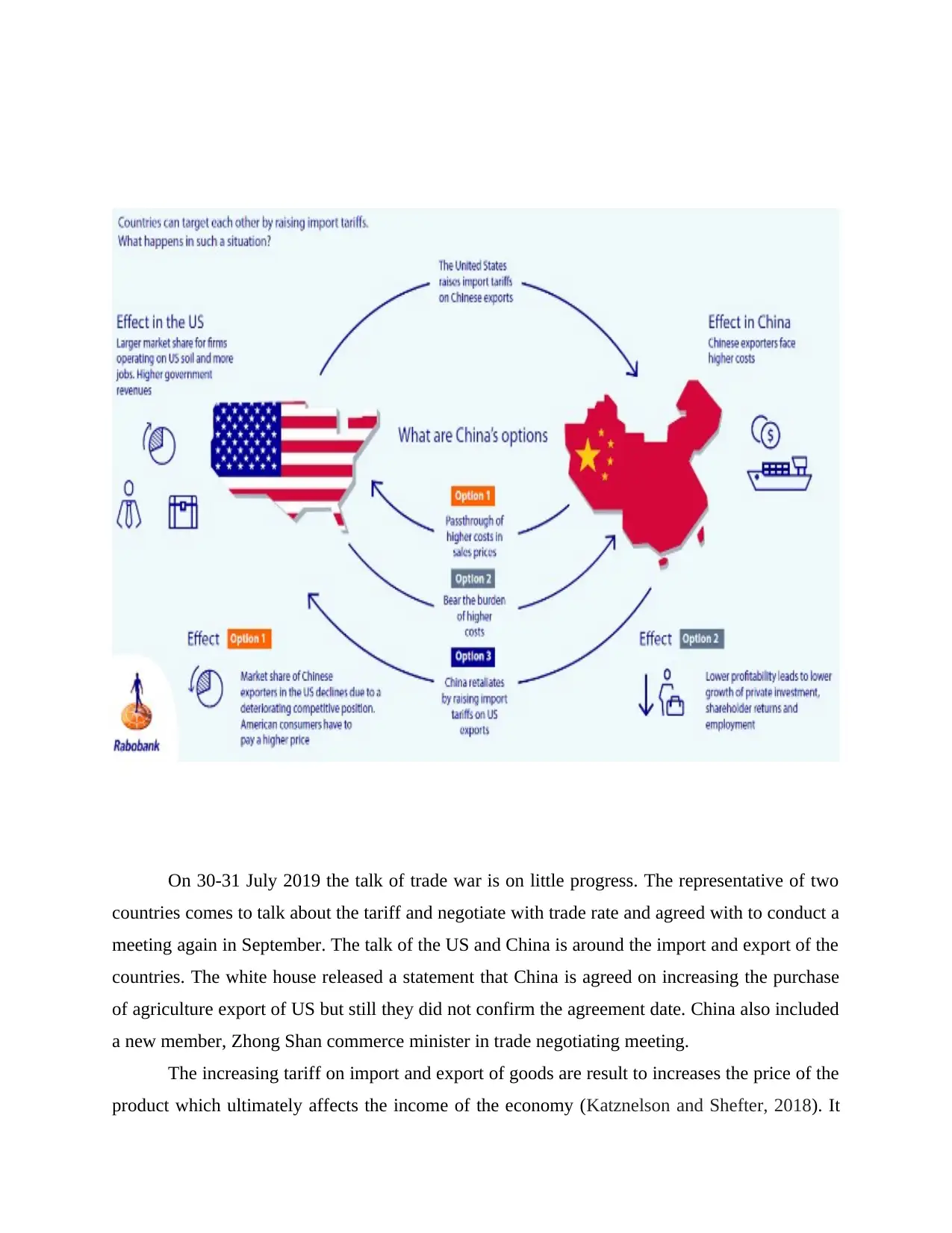
On 30-31 July 2019 the talk of trade war is on little progress. The representative of two
countries comes to talk about the tariff and negotiate with trade rate and agreed with to conduct a
meeting again in September. The talk of the US and China is around the import and export of the
countries. The white house released a statement that China is agreed on increasing the purchase
of agriculture export of US but still they did not confirm the agreement date. China also included
a new member, Zhong Shan commerce minister in trade negotiating meeting.
The increasing tariff on import and export of goods are result to increases the price of the
product which ultimately affects the income of the economy (Katznelson and Shefter, 2018). It
countries comes to talk about the tariff and negotiate with trade rate and agreed with to conduct a
meeting again in September. The talk of the US and China is around the import and export of the
countries. The white house released a statement that China is agreed on increasing the purchase
of agriculture export of US but still they did not confirm the agreement date. China also included
a new member, Zhong Shan commerce minister in trade negotiating meeting.
The increasing tariff on import and export of goods are result to increases the price of the
product which ultimately affects the income of the economy (Katznelson and Shefter, 2018). It
Paraphrase This Document
Need a fresh take? Get an instant paraphrase of this document with our AI Paraphraser
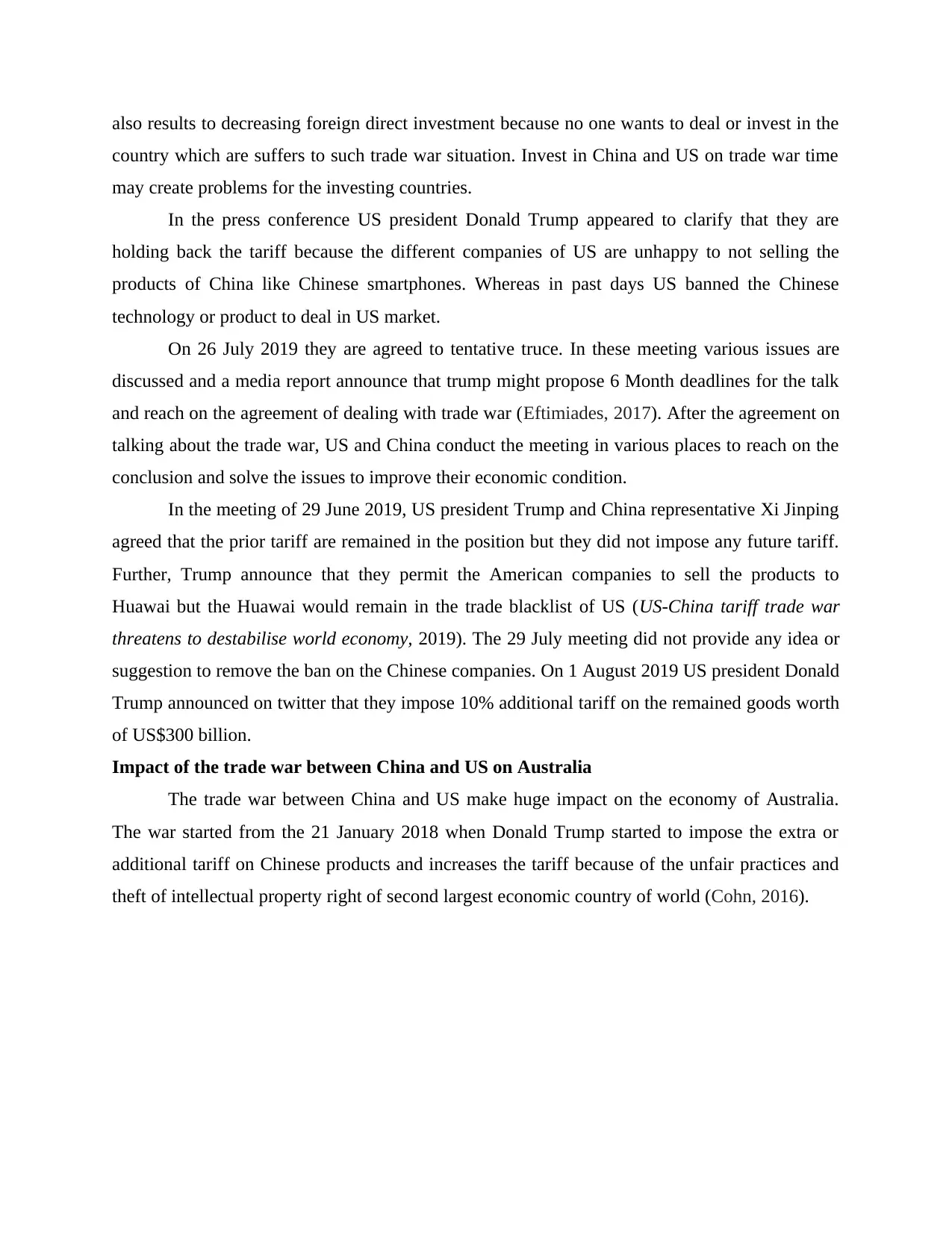
also results to decreasing foreign direct investment because no one wants to deal or invest in the
country which are suffers to such trade war situation. Invest in China and US on trade war time
may create problems for the investing countries.
In the press conference US president Donald Trump appeared to clarify that they are
holding back the tariff because the different companies of US are unhappy to not selling the
products of China like Chinese smartphones. Whereas in past days US banned the Chinese
technology or product to deal in US market.
On 26 July 2019 they are agreed to tentative truce. In these meeting various issues are
discussed and a media report announce that trump might propose 6 Month deadlines for the talk
and reach on the agreement of dealing with trade war (Eftimiades, 2017). After the agreement on
talking about the trade war, US and China conduct the meeting in various places to reach on the
conclusion and solve the issues to improve their economic condition.
In the meeting of 29 June 2019, US president Trump and China representative Xi Jinping
agreed that the prior tariff are remained in the position but they did not impose any future tariff.
Further, Trump announce that they permit the American companies to sell the products to
Huawai but the Huawai would remain in the trade blacklist of US (US-China tariff trade war
threatens to destabilise world economy, 2019). The 29 July meeting did not provide any idea or
suggestion to remove the ban on the Chinese companies. On 1 August 2019 US president Donald
Trump announced on twitter that they impose 10% additional tariff on the remained goods worth
of US$300 billion.
Impact of the trade war between China and US on Australia
The trade war between China and US make huge impact on the economy of Australia.
The war started from the 21 January 2018 when Donald Trump started to impose the extra or
additional tariff on Chinese products and increases the tariff because of the unfair practices and
theft of intellectual property right of second largest economic country of world (Cohn, 2016).
country which are suffers to such trade war situation. Invest in China and US on trade war time
may create problems for the investing countries.
In the press conference US president Donald Trump appeared to clarify that they are
holding back the tariff because the different companies of US are unhappy to not selling the
products of China like Chinese smartphones. Whereas in past days US banned the Chinese
technology or product to deal in US market.
On 26 July 2019 they are agreed to tentative truce. In these meeting various issues are
discussed and a media report announce that trump might propose 6 Month deadlines for the talk
and reach on the agreement of dealing with trade war (Eftimiades, 2017). After the agreement on
talking about the trade war, US and China conduct the meeting in various places to reach on the
conclusion and solve the issues to improve their economic condition.
In the meeting of 29 June 2019, US president Trump and China representative Xi Jinping
agreed that the prior tariff are remained in the position but they did not impose any future tariff.
Further, Trump announce that they permit the American companies to sell the products to
Huawai but the Huawai would remain in the trade blacklist of US (US-China tariff trade war
threatens to destabilise world economy, 2019). The 29 July meeting did not provide any idea or
suggestion to remove the ban on the Chinese companies. On 1 August 2019 US president Donald
Trump announced on twitter that they impose 10% additional tariff on the remained goods worth
of US$300 billion.
Impact of the trade war between China and US on Australia
The trade war between China and US make huge impact on the economy of Australia.
The war started from the 21 January 2018 when Donald Trump started to impose the extra or
additional tariff on Chinese products and increases the tariff because of the unfair practices and
theft of intellectual property right of second largest economic country of world (Cohn, 2016).
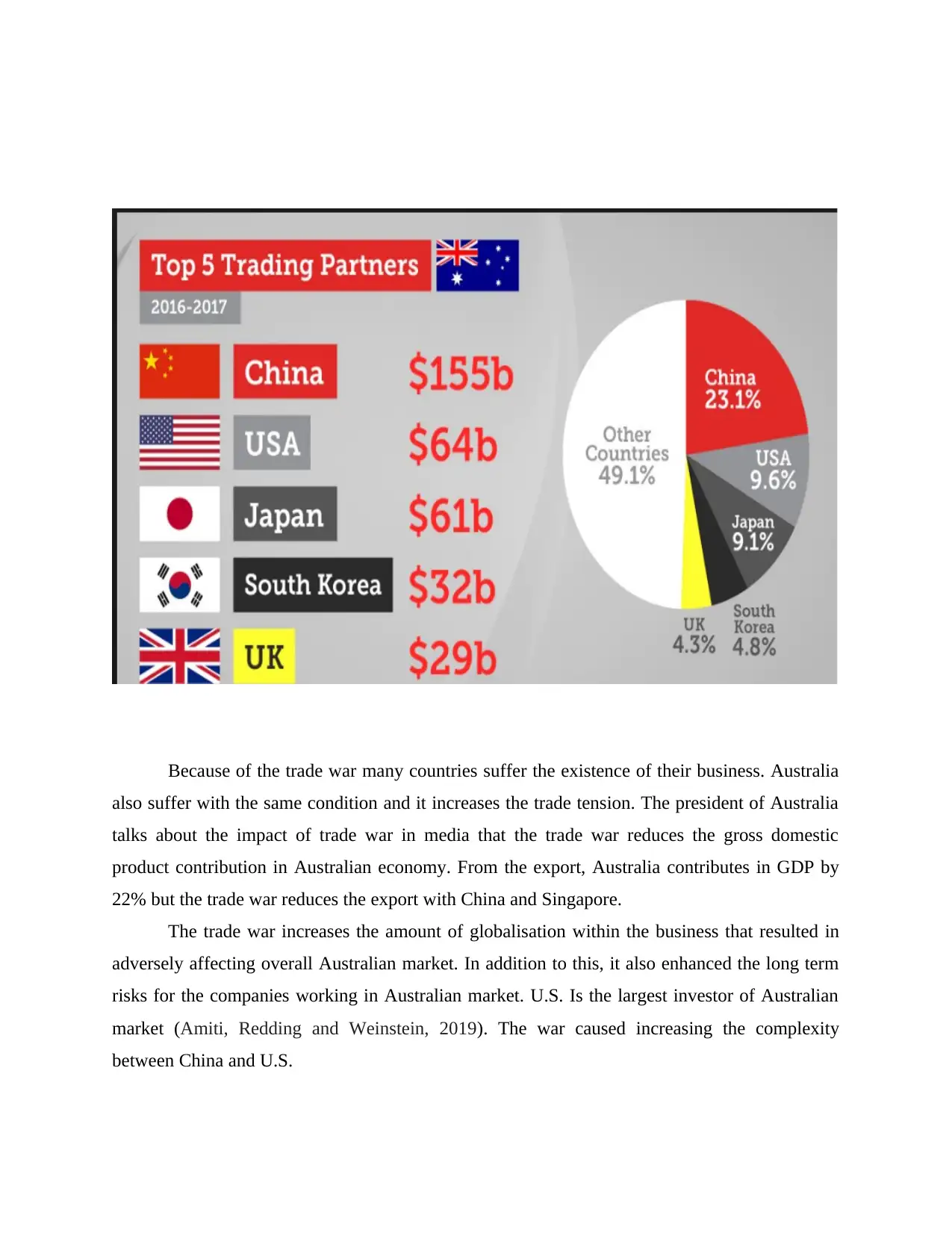
Because of the trade war many countries suffer the existence of their business. Australia
also suffer with the same condition and it increases the trade tension. The president of Australia
talks about the impact of trade war in media that the trade war reduces the gross domestic
product contribution in Australian economy. From the export, Australia contributes in GDP by
22% but the trade war reduces the export with China and Singapore.
The trade war increases the amount of globalisation within the business that resulted in
adversely affecting overall Australian market. In addition to this, it also enhanced the long term
risks for the companies working in Australian market. U.S. Is the largest investor of Australian
market (Amiti, Redding and Weinstein, 2019). The war caused increasing the complexity
between China and U.S.
also suffer with the same condition and it increases the trade tension. The president of Australia
talks about the impact of trade war in media that the trade war reduces the gross domestic
product contribution in Australian economy. From the export, Australia contributes in GDP by
22% but the trade war reduces the export with China and Singapore.
The trade war increases the amount of globalisation within the business that resulted in
adversely affecting overall Australian market. In addition to this, it also enhanced the long term
risks for the companies working in Australian market. U.S. Is the largest investor of Australian
market (Amiti, Redding and Weinstein, 2019). The war caused increasing the complexity
between China and U.S.
⊘ This is a preview!⊘
Do you want full access?
Subscribe today to unlock all pages.

Trusted by 1+ million students worldwide
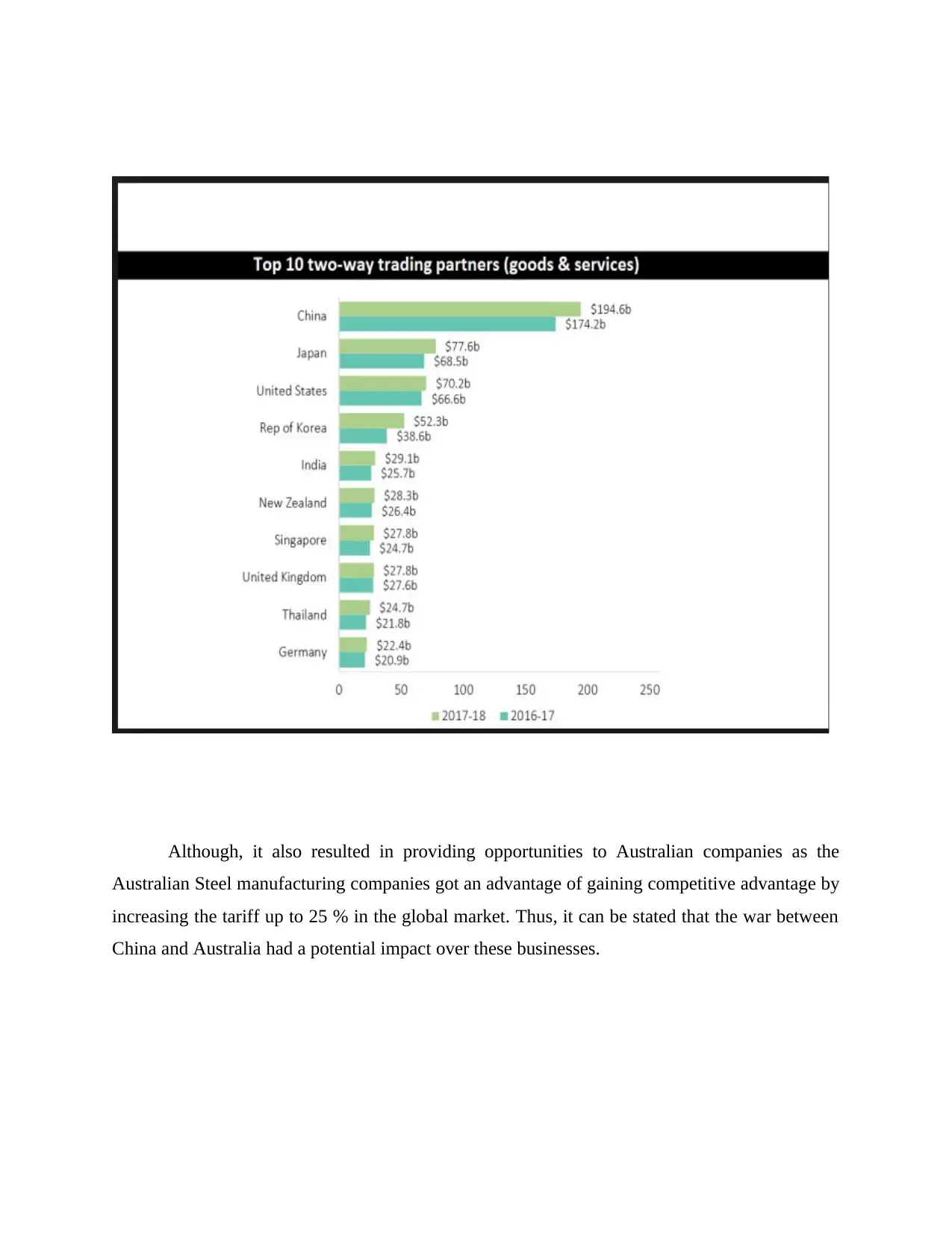
Although, it also resulted in providing opportunities to Australian companies as the
Australian Steel manufacturing companies got an advantage of gaining competitive advantage by
increasing the tariff up to 25 % in the global market. Thus, it can be stated that the war between
China and Australia had a potential impact over these businesses.
Australian Steel manufacturing companies got an advantage of gaining competitive advantage by
increasing the tariff up to 25 % in the global market. Thus, it can be stated that the war between
China and Australia had a potential impact over these businesses.
Paraphrase This Document
Need a fresh take? Get an instant paraphrase of this document with our AI Paraphraser
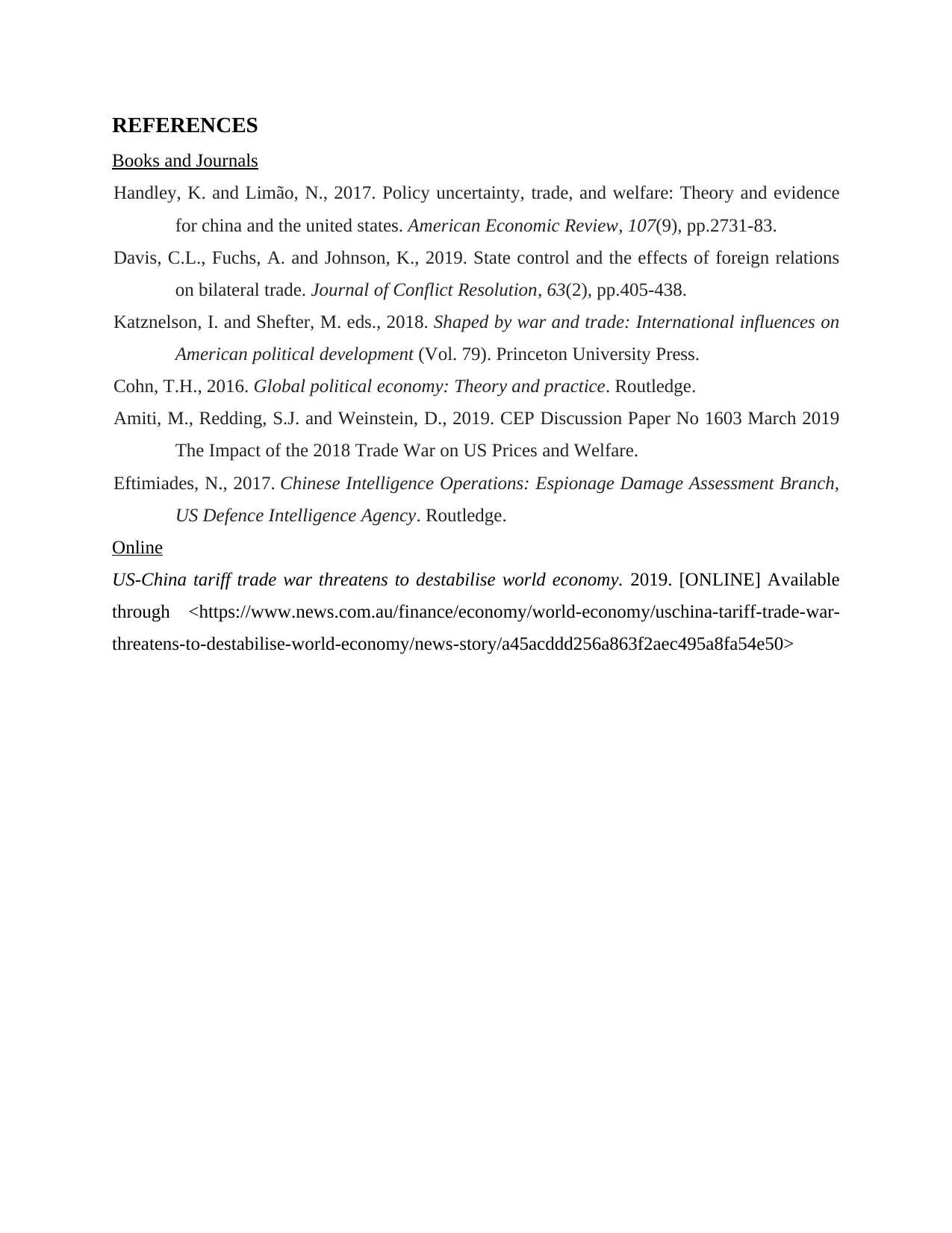
REFERENCES
Books and Journals
Handley, K. and Limão, N., 2017. Policy uncertainty, trade, and welfare: Theory and evidence
for china and the united states. American Economic Review, 107(9), pp.2731-83.
Davis, C.L., Fuchs, A. and Johnson, K., 2019. State control and the effects of foreign relations
on bilateral trade. Journal of Conflict Resolution, 63(2), pp.405-438.
Katznelson, I. and Shefter, M. eds., 2018. Shaped by war and trade: International influences on
American political development (Vol. 79). Princeton University Press.
Cohn, T.H., 2016. Global political economy: Theory and practice. Routledge.
Amiti, M., Redding, S.J. and Weinstein, D., 2019. CEP Discussion Paper No 1603 March 2019
The Impact of the 2018 Trade War on US Prices and Welfare.
Eftimiades, N., 2017. Chinese Intelligence Operations: Espionage Damage Assessment Branch,
US Defence Intelligence Agency. Routledge.
Online
US-China tariff trade war threatens to destabilise world economy. 2019. [ONLINE] Available
through <https://www.news.com.au/finance/economy/world-economy/uschina-tariff-trade-war-
threatens-to-destabilise-world-economy/news-story/a45acddd256a863f2aec495a8fa54e50>
Books and Journals
Handley, K. and Limão, N., 2017. Policy uncertainty, trade, and welfare: Theory and evidence
for china and the united states. American Economic Review, 107(9), pp.2731-83.
Davis, C.L., Fuchs, A. and Johnson, K., 2019. State control and the effects of foreign relations
on bilateral trade. Journal of Conflict Resolution, 63(2), pp.405-438.
Katznelson, I. and Shefter, M. eds., 2018. Shaped by war and trade: International influences on
American political development (Vol. 79). Princeton University Press.
Cohn, T.H., 2016. Global political economy: Theory and practice. Routledge.
Amiti, M., Redding, S.J. and Weinstein, D., 2019. CEP Discussion Paper No 1603 March 2019
The Impact of the 2018 Trade War on US Prices and Welfare.
Eftimiades, N., 2017. Chinese Intelligence Operations: Espionage Damage Assessment Branch,
US Defence Intelligence Agency. Routledge.
Online
US-China tariff trade war threatens to destabilise world economy. 2019. [ONLINE] Available
through <https://www.news.com.au/finance/economy/world-economy/uschina-tariff-trade-war-
threatens-to-destabilise-world-economy/news-story/a45acddd256a863f2aec495a8fa54e50>

⊘ This is a preview!⊘
Do you want full access?
Subscribe today to unlock all pages.

Trusted by 1+ million students worldwide

1 out of 10
Related Documents
Your All-in-One AI-Powered Toolkit for Academic Success.
+13062052269
info@desklib.com
Available 24*7 on WhatsApp / Email
![[object Object]](/_next/static/media/star-bottom.7253800d.svg)
Unlock your academic potential
Copyright © 2020–2025 A2Z Services. All Rights Reserved. Developed and managed by ZUCOL.





